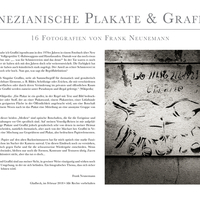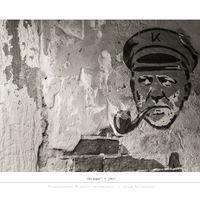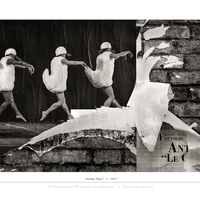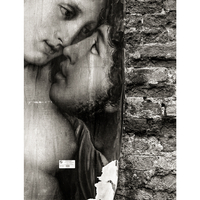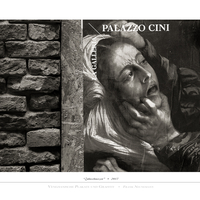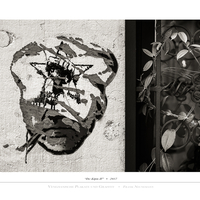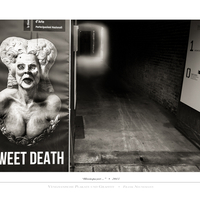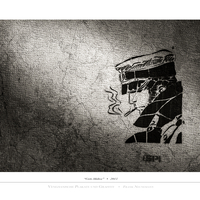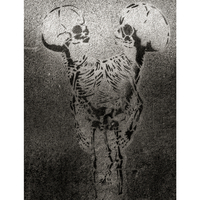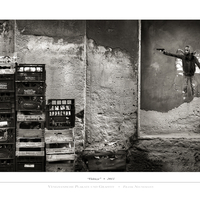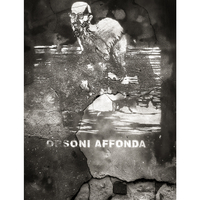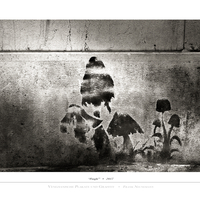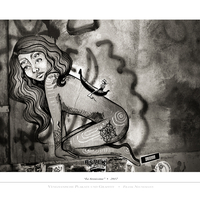Venetian Graffiti and Posters
This project is a journey back in time for me--kindof because back in the 1970s to the 90s black and white was the only conceivable way for me to photograph. Then color took over and when film based photography became digital it stayed that way. Maybe it is time for me to get back to the roots, at least occasionally...
Anyway, after finishing a set of digital "double exposure" prints in black and white, I thought that it might be worth a try to use the same technique on a collection of graffiti and torn posters I shot in Venice during the last three years. For me it actually worked, so here ist the result.
I picked 16 images, that I turned into an A4 size folio, pigment ink-jet printed on Hahnemühle PhotoRag Baryta glossy paper (305 grams / m2), including a cover sheet with a few thoughts about the project. To keep the prints together as a unit I made a folded folio cover out of grey heavy art paper (300 grams / m2) similar to the ones you can see in folios #1 to #3.
Translation of the cover sheet text (from German):
For the first time, I saw graffiti in a photo book about New York City sometime in the 1970s. Paint sprayed subway cars and house facades. At that time it was still something new and I thought to myself: "... what a friggin' mess." In fact, today they still often are a friggin' mess, but they have evolved a lot over the years. Their colourfulness has increased and they have also increased artistically. Well, what does the definition of terms say?
"Graffiti, Italian singular graffito, is a collective term for thematically and creatively different visible elements, such as pictures, logos or signs, which were created with different techniques on surfaces or by their change in private and public spaces. Graffiti are mostly under a pseudonym and made illegally. " (Wikipedia)
About posters Wikipedia says: "A poster is a large, usually with text and image printed sheet of paper or cloth, which is attached to a billboard, a poster rider, advertising pillar or any other suitable surface in the public to send a message to transfer. By its very nature, the poster is a message to an anonymous group of recipients."
Similarities of these two "media" are visual messages that are specific to local and cultural events. On my trips to Venice, I noticed that there posters and graffiti, however, are very different in design from those at home (northwest Germany), of course, thematically, but also from their looks. Graffiti in Venice are usually a mixture of sprayed- and poster materials, e.g. printed paper elements.
The (often torn) paper on the old brick walls have a visually strong fascination and looks--already surreal in the viewfinder of the camera. To strengthen this impression, I have decided against color and used black and white reproduction. When color disappears, only the shapes, contrasts and textures are left. At first I thought, this will not work, but actually it does ...
Venice's posters and graffiti, in my opinion, are in some ways unique and even more bizarre in the environment in which they find themselves. A photographic theme that will certainly be worth even more years.

